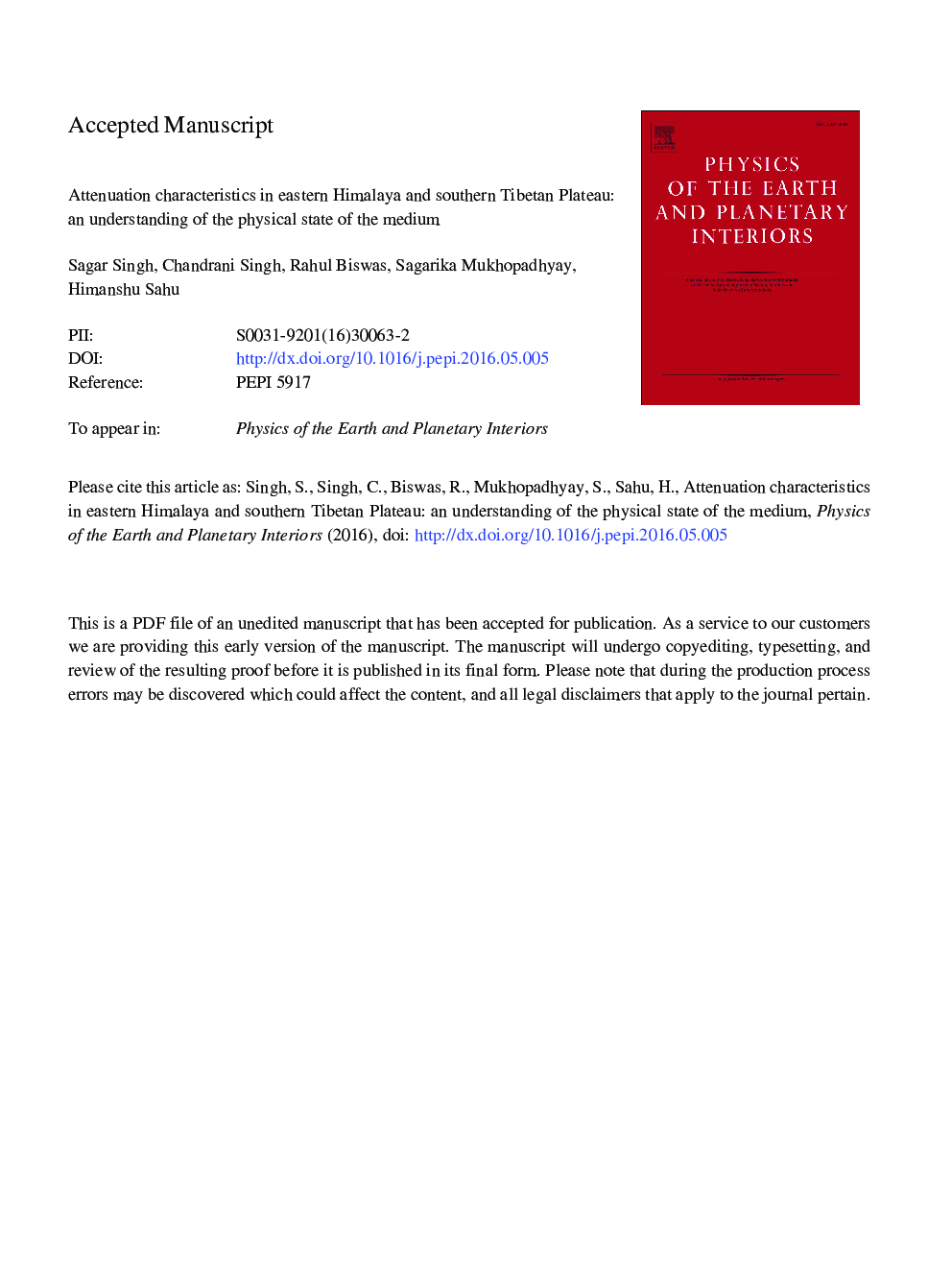| Article ID | Journal | Published Year | Pages | File Type |
|---|---|---|---|---|
| 6447463 | Physics of the Earth and Planetary Interiors | 2016 | 36 Pages |
Abstract
Attenuation characteristics of the crust in the eastern Himalaya and the southern Tibetan Plateau are investigated using high quality data recorded by Himalayan Nepal Tibet Seismic Experiment (HIMNT) during 2001-2003. The present study aims to provide an attenuation model that can address the physical mechanism governing the attenuation characteristics in the underlying medium. We have studied the Coda wave attenuation (Qc) in the single isotropic scattering model hypothesis, S wave attenuation (Qs) by using the coda normalization method and intrinsic (Qi-1) and scattering (Qsc-1) quality factors by the multiple Lapse Time Window Analysis (MLTWA) method under the assumption of multiple isotropic scattering in a 3-D half space within the frequency range 2-12Â Hz. All the values of Q exhibit frequency dependent nature for a seismically active area. At all the frequencies intrinsic absorption is predominant compared to scattering attenuation and seismic albedo (B0) are found to be lower than 0.5. The observed discrepancies between the observed and theoretical models can be corroborated by the depth-dependent velocity and attenuation structure as well as the assumption of a uniform distribution of scatterers. Our results correlate well with the existing geo-tectonic model of the area, which may suggest the possible existence of trapped fluids in the crust or its thermal nature. Surprisingly the underlying cause of high attenuation in the crust of eastern Himalaya and southern Tibet makes this region distinct from its adjacent western Himalayan segment. The results are comparable with the other regions reported globally.
Related Topics
Physical Sciences and Engineering
Earth and Planetary Sciences
Geophysics
Authors
Sagar Singh, Chandrani Singh, Rahul Biswas, Sagarika Mukhopadhyay, Himanshu Sahu,
